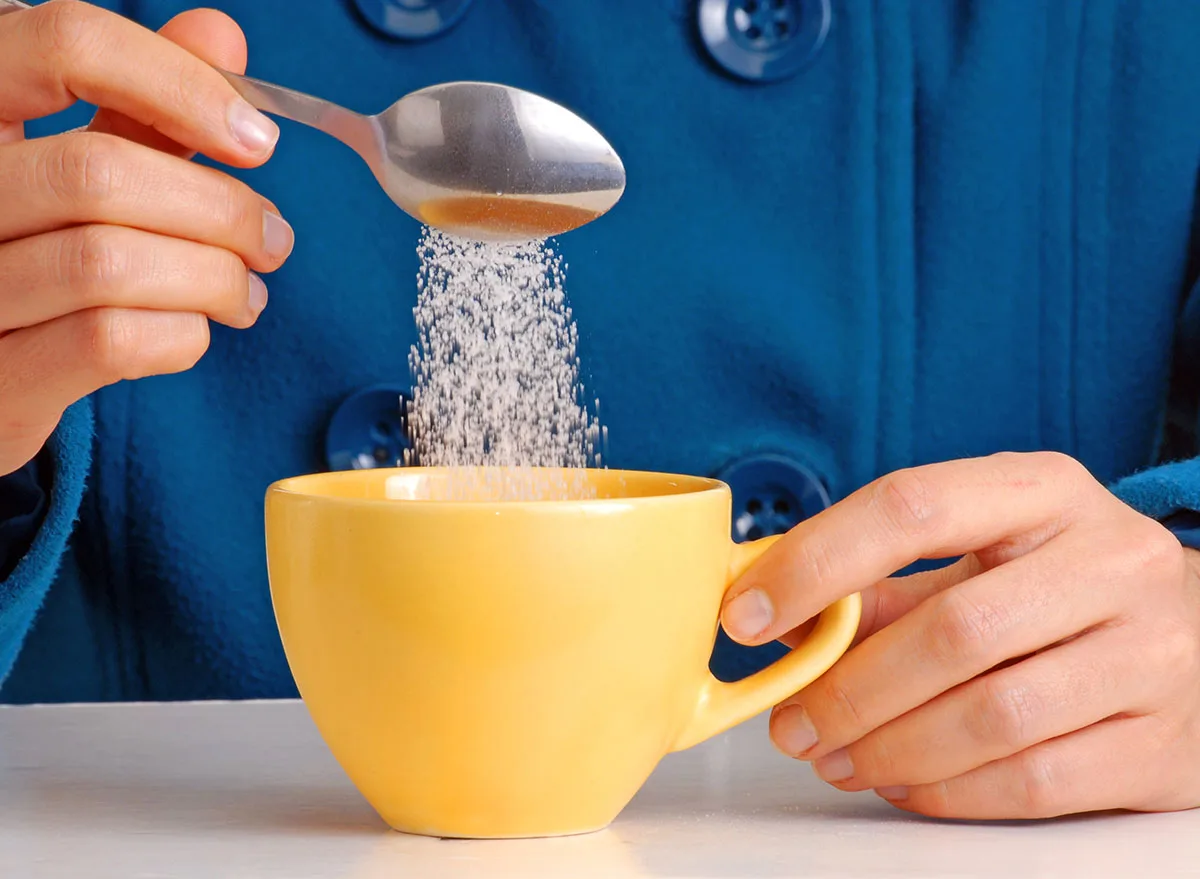The 5 best (and worst) sweeteners you can eat
Where does your favorite sweetener line up?

Let’s face it: Sweeteners aren’t great for your health. They stimulate your appetite, encourage your sweet tooth and pack on the pounds while also placing you at risk for obesity, type 2 diabetes, heart disease and fatty liver.
But, we’re all human and cutting all sweeteners tomorrow isn’t realistic.
That’s why we asked dietitian Anna Taylor, MS, RD, LD, CDCES, to rank the best and worst sweeteners to help you decide which one is best for you and how to (eventually) break your habit.
1. Fresh or frozen fruit
Coming in at the number one way to sweeten your food and drinks is by using fresh or frozen fruit.
Fruit doesn’t have any empty calories, which makes it an ideal sweetener, Taylor says.
Try sweetening oatmeal by mixing in banana or applesauce, adding berries to plain Greek yoghurt and sweetening smoothies with frozen fruit. Another option is to add natural flavourings like vanilla or almond extract, cocoa powder and spices like cinnamon and clove.
“I grew up with a diet high in sugar. When I cut down on added sugars and sweeteners, I started enjoying the natural sweetness of fresh berries and melon,” Taylor says. “That’s when my sugar cravings started to fade.”
2. Sugar substitutes
Stevia — in packet, drops or plant form — is a dietitian favorite.
Not only does it contain zero calories, but stevia-based sweeteners are herbal as opposed to artificial. Stevia blended with a sugar alcohol called erythritol (Truvia®) works well in low-carb baked desserts, too. For a quick and easy sweet treat, Taylor suggests mixing 1 teaspoon of the sweetener with plain Greek yoghurt and peanut butter.
If you have prediabetes or diabetes, artificial sweeteners and stevia are preferable to real sugar.
“Artificial sweeteners will not immediately raise your blood sugar like real sugar,” Taylor says.
Sugar substitutes may cause you to crave more sweet and sugary foods. Studies link artificial sweeteners, considered safe in moderation, with a higher risk of glucose intolerance, a precursor to prediabetes and diabetes.
Artificial sweeteners may be associated with changes in gut bacteria and lead to increased fat storage, which no one wants.
3. Natural sugar: raw honey, maple syrup, agave nectar, raw sugar
The good news is that natural sweeteners provide a few more nutrients than table sugar. The bad news? They’re all still forms of sugar and are high in calories, so use no more than 1 to 2 teaspoons per day, Taylor says.
Raw honey and pure maple syrup both contain antioxidants and have prebiotic oligosaccharides that help feed gut flora. Raw honey has an added benefit of vitamins E and C as well as minerals. Note: Honey should not be given to infants because it may contain botulism bacteria spores, a serious health hazard for babies.
When hitting the grocery store, read all food labels for hidden ingredients because commercial maple syrup brands often contain high-fructose corn syrup. High-fructose diets are linked to long-term metabolic complications like insulin resistance, belly fat accumulation and high triglyceride levels. When in doubt, stick primarily with pure maple syrup.
Agave nectar provides fewer nutrients than raw honey or pure maple syrup. It should not be given to infants because it is not pasteurized.
“Agave nectar has the same number of carbohydrates and calories as table sugar, but you get a lot of flavor from a small amount,” Taylor says. “Since agave nectar has a slightly lower glycemic index but still contains sugar, it will still raise your blood sugar.”
Bottom line, when it comes to your waistline, weight and blood sugars, all-natural sweeteners behave like sugar.
4. Refined sugar
Table sugar is inflammatory, high in calories, offers no nutritional benefit and, unfortunately, it’s already hiding in many of your favourite foods.
“Most flavoured granola bars, yoghurts and cereals already contain around 12 grams (1 tablespoon) of added sugar per serving,” Taylor says. “Many sugary drinks contain about 40 grams of added sugar per serving.”
Even your favorite frozen desserts and baked goods can pack tons of added sugar. The American Heart Association recommends limiting added sugar to 25 grams per day (6 teaspoons, or about 100 calories) for women and children over the age of 2. For men, they recommend limiting added sugar to 36 grams per day (9 teaspoons, or about 150 calories).
“The average American eats about 77 grams per day, which is about three times what the recommendation is for a woman,” Taylor says. “That is equivalent to about 230 calories per day, which could add up to as much as 23 pounds of body fat per year. This is a serious contributor to our obesity epidemic.”
Food isn’t the only place where added sugar hides. Beverages are the leading category source of added sugar, clocking in at nearly half of the total added sugar consumed by Americans. Limiting sugar-sweetened beverages is crucial in lowering the risk for obesity, which is a risk factor for at least 12 different kinds of cancer. Meanwhile, there is no strong evidence that diet drinks are a cause of cancer in humans.
5. No sugar — how to break your habit
No sugar or sugar substitute is healthy in excess.
“That’s true whether it’s in soda, sweet tea, fruit drinks, packs of sugar or sugar substitute for coffee or tea, or artificially sweetened flavour packets for water,” Taylor says. “Drink plain water! At the very least, drink unflavored tea, coffee, bubbly water or water with fruit infused in it.”
How can you break your habit? Use a true measuring spoon (not just what you think is a teaspoon that you grabbed out of your silverware drawer) to gauge how much added sugar you’re using daily.
“Challenge yourself — your foods and beverages don’t always need to taste sweet,” Taylor notes.
Try decreasing the sweetener in your coffee or tea by 1 teaspoon per week and start diluting juices by mixing half your usual portion with water to retain some of the sweetness. While at the grocery store, start a habit of reading labels. Much of the sugar in the American diet is found in processed and sweetened pre-made food and beverages.
That way, you won’t have to quit cold turkey.
“Our goal isn’t to get added sugar intake down to zero because that isn’t realistic,” Taylor says. “Americans need to work hard to drastically reduce sugar intake to support healthy weights and decrease our risk for chronic conditions like cancer, diabetes and heart disease.”
-Health Essentials









